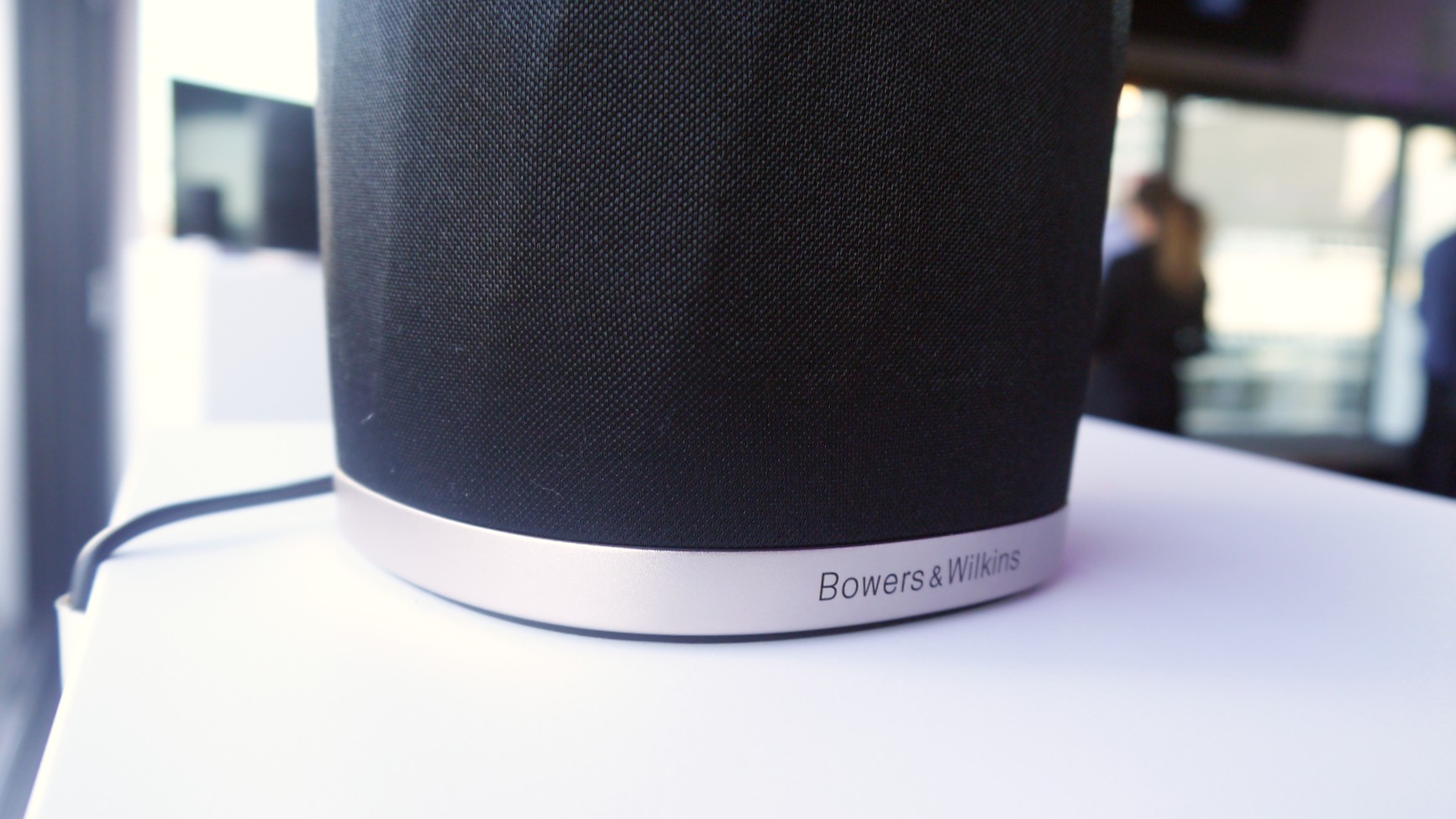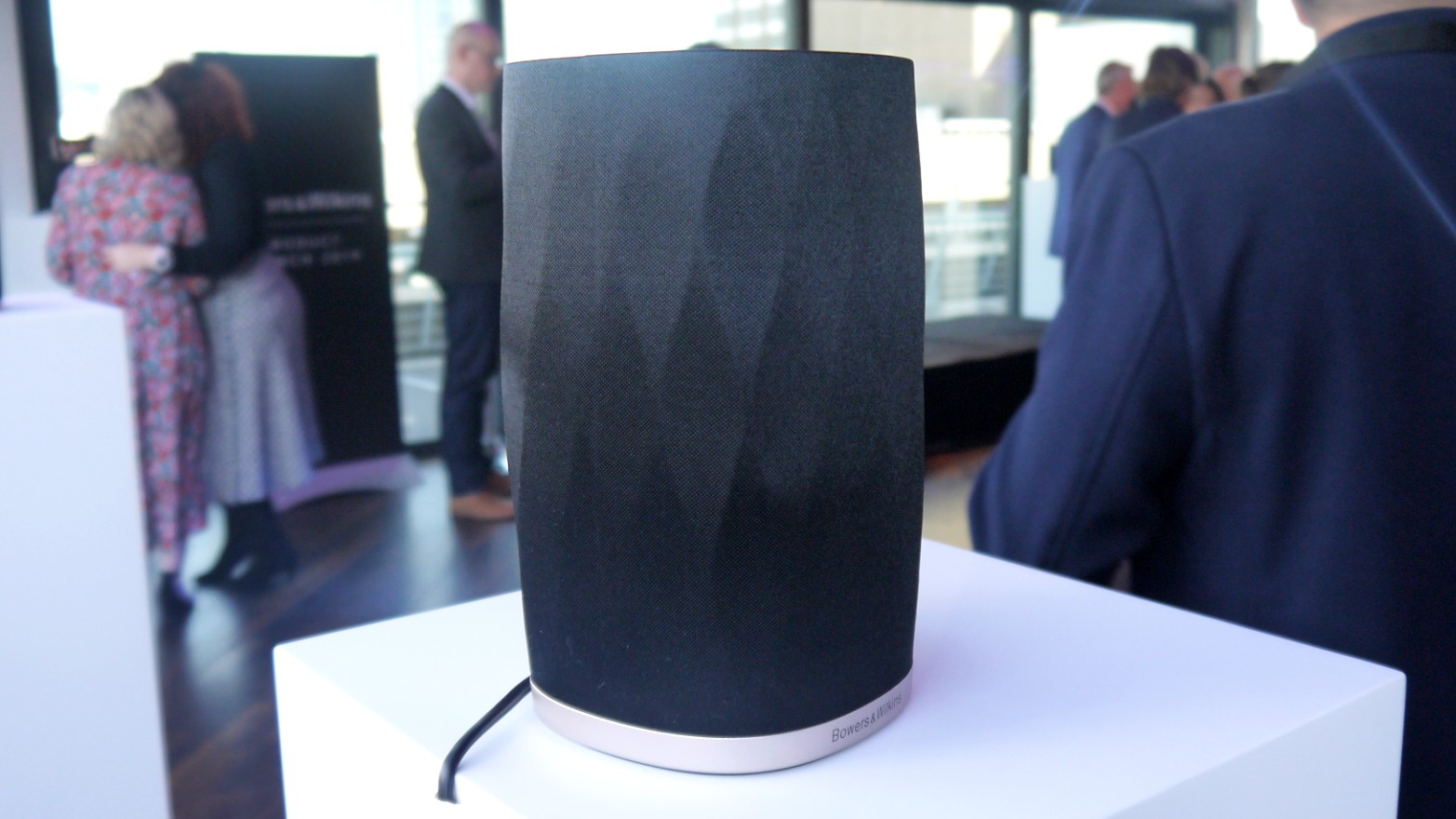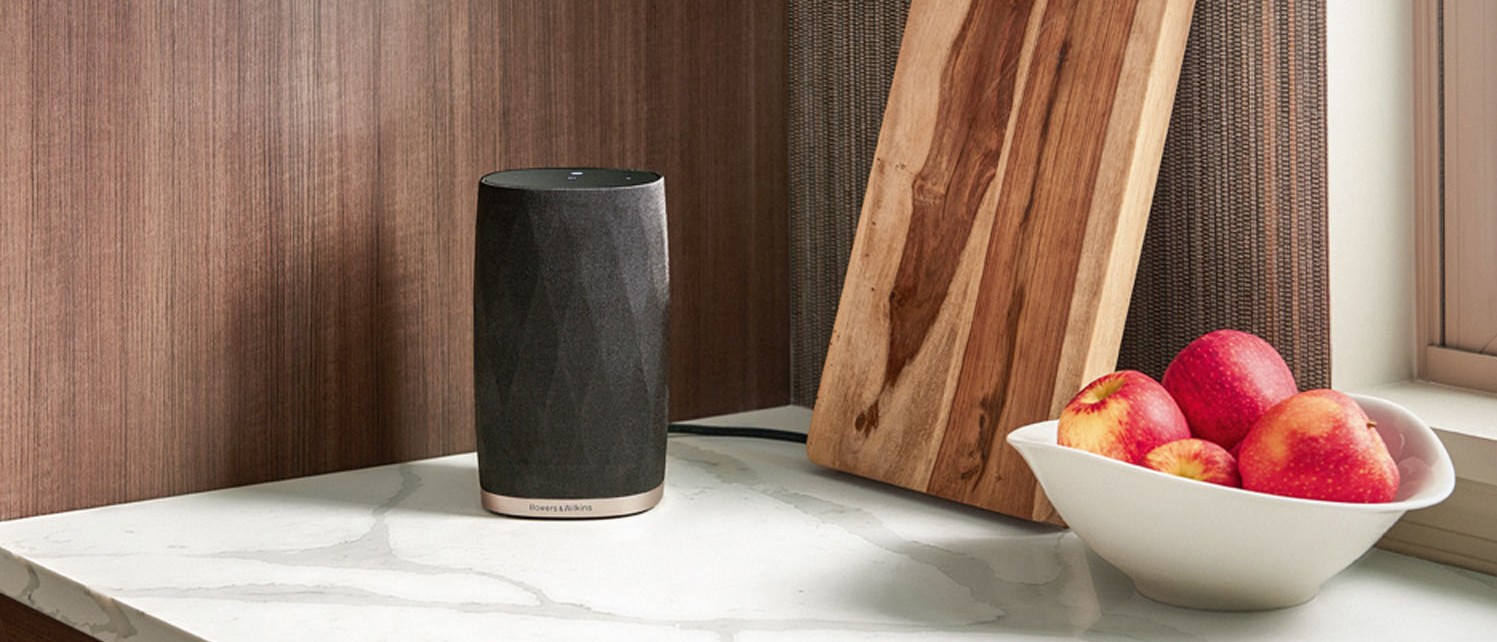Early Verdict
We're impressed with the Bowers & Wilkins Formation Flex so far, thanks to its high audio fidelity and sculptural design. It may be pricey compared to the competition but it's the cheapest entry-point to the Formation range.
Pros
- +
Gorgeous design
- +
Stunning audio clarity
- +
Support for Hi-Res Audio
Cons
- -
Rather expensive
- -
No 'smart' features
Why you can trust TechRadar
Bowers & Wilkins Formation range of speakers saw the audio brand branch out in multi-room home streaming, in a similar vein to Sonos.
The range comprised bookshelf speakers, a soundbar, an amplifier, and a large standalone wireless speaker, but it was missing one thing: a wireless speaker that will comfortably fit in even the smallest rooms.
Enter the Bowers & Wilkins Formation Flex, which the company says has "the highest quality sound ever found in a standalone wireless speaker of its size".
We heard the speaker in action at a recent demonstration and have posted some thoughts on the experience below.
Price and availability
The Formation Flex will be available from the end of September, and will cost £399 - we're still waiting on global pricing, but that works out at around $495 / AU$720.
That's considerably cheaper than the Bowers & Wilkins Formation Wedge, the other wireless speaker in the series, which comes in at an eye-watering $899 (£899, AU$1650).
That's not to say it's particularly cheap either, especially compared to the competition. The Sonos One, for example, is a decent alternative to the Formation Flex and it only costs $199 / £199 / AU$299.
Sign up for breaking news, reviews, opinion, top tech deals, and more.

Design
True to form, the Formation Flex sports a cool, architectural design that will make a statement in your home without dominating the entire room.
On the front, a wraparound black grille is decked out with an angular, honeycomb-style pattern, with a thin metallic band at the bottom inscribed with the Bowers & Wilkins logo.
A minimalist touch screen on the top of the speaker allows you to control the playback of your music, with lit up play/pause, pairing, skip back and skip forward buttons cast against a reflective black screen.
In terms of inputs, it seems to be pretty minimal, with USB and Ethernet ports on the back of the speaker, adding to its clean design, but limiting potential inputs.

Features
The Formation runs on the brand's patented Robust Mesh Network, which works alongside your home's Wi-Fi. This means you can have a multi-room setup, with speakers streaming music in every room of your house without taking up precious bandwidth on your network.
Despite Bowers & Wilkins telling us in April 2019 that Formation speakers would be getting voice control in the future, the Flex doesn't seem to have support for voice assistants like Alexa or Google Assistant; a smart speaker, this is not.

Sound performance
With support for "high resolution streaming with twice the fidelity of the leading wireless speaker brand for the purest and clearest audio experience," Bowers & Wilkins think the Formation Flex sounds very impressive indeed - and so did we.
During a demonstration we heard the speaker in action with Billie Eilish's You Should See Me In A Crown, and it filled the room with ease, despite its diminutive frame. With 50W amplifiers powering each driver, we weren't surprised that this speaker is small but mighty.
Thumpy bass provided a warm undercurrent to wavering synths as Eilish's affected vocal cut through the mix with perfect clarity.
Clarity is important to any discerning audiophile - and support for 96/24 bit Hi-Res Audio means that you can stream from Tidal or Amazon Music HD to your heart's content. As well as support for 96/24 bit audio resolution, the Formation Flex packs a decoupled double dome tweeter for a wide, powerful soundstage.
That was doubly true when we got to hear two Formation Flex speakers paired together, both in mono and stereo mode.
When listening in mono, there was no perceptible lag between the two speakers, despite sitting on opposite sides of a large room - testament to the effectiveness of Bowers & Wilkins' Robust Mesh Network technology.
Lastly, we were treated to a host of Flex speakers playing as one; and that's when we were really blown away, with powerful bass frequencies vibrating the floor we were standing on.
We never felt as though that powerful bass was bleeding into the mid frequencies, which is partly down to the Flex's inbuilt midrange driver, which extends clarity to the lower end of the mix.
Verdict
So far, we're very impressed by the Bowers & Wilkins Formation Flex – it's incredibly powerful, offers fantastic audio fidelity, and it looks just as good as the other products in the Formation range.
Even better, unlike its siblings, it's not prohibitively expensive, either. Sure, it's pricey, but it's a great way to gain entry to the Formation lineup without breaking the bank.
We'll need to carry out more extensive tests before we can say for sure, but don't be surprised if the Flex ends up in our roundup of the best wireless speakers.
- Don't miss our list of the best Bluetooth speakers in 2019

Olivia was previously TechRadar's Senior Editor - Home Entertainment, covering everything from headphones to TVs. Based in London, she's a popular music graduate who worked in the music industry before finding her calling in journalism. She's previously been interviewed on BBC Radio 5 Live on the subject of multi-room audio, chaired panel discussions on diversity in music festival lineups, and her bylines include T3, Stereoboard, What to Watch, Top Ten Reviews, Creative Bloq, and Croco Magazine. Olivia now has a career in PR.
What is a hands on review?
Hands on reviews' are a journalist's first impressions of a piece of kit based on spending some time with it. It may be just a few moments, or a few hours. The important thing is we have been able to play with it ourselves and can give you some sense of what it's like to use, even if it's only an embryonic view. For more information, see TechRadar's Reviews Guarantee.
